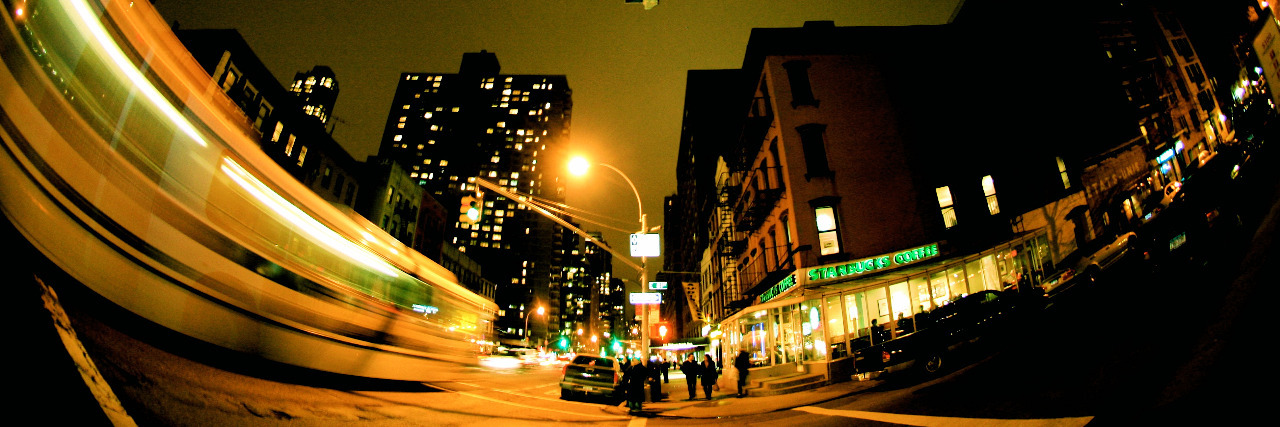I was diagnosed with oscillopsia – a balance disorder – when I was a freshman in high school. I had just undergone a radical ear/skull surgery, which stemmed from a bacterial infection that started in my ear and quietly spread throughout the right side of my head. For about eight weeks following the surgery, I sported a PICC line (think of it like an at-home, portable IV that I covertly covered up with a tie-dye soccer sock). Every eight hours, my parents would administer antibiotic “bombs” by flushing the line with a syringe of saline and then attaching the squishy ball of medication. Fun fact: those suckers had to be refrigerated!
About six weeks into my treatment, I started having odd symptoms: the inability to focus my vision on a single object (which often resulted in me losing things that were right in front of me), awkward face-plants into walls, long treks up a flight of stairs, and a quick tumble down my high school’s bleachers – just to name a few. But due to the severity of the bacterial infection I contracted, it was decided I needed a couple more weeks of antibiotics just to be safe.
Little did we know, but by that point it was already too late, and what resulted was a complete wipe-out of my vestibular, or balance system. It’s an incurable, irreversible disability that I’ll have to live with the rest of my life.
People often ask me what oscillopsia looks and feels like. It differs from vertigo as I don’t experience a spinning sensation. I like to say that it’s all in the name; like the verb, to oscillate — to move back and forth. In my case, objects jerk, blur and bounce at different rates depending on the day. Traffic, crowds of people, precipitation (especially rain), bright sunlight, and fatigue can all adversely affect how I see on a given day. And there’s very little I can do to counteract the triggers.
Picture yourself at a grocery store. Do you see aisles lined with rectangular boxes of cereal and clear jars of cocktail olives? Can you make out the price of an item with a quick jerk of your head? For me, a solo trip to the grocery store is like the fifth level of purgatory. I just see stripes of colors and dancing produce, like the sandstone layers of the Grand Canyon had a few too many martinis last night.
I often see several of the same thing – for instance, seven or eight silhouettes of the same person or building — but each one has varying shading that helps me discern the actual target to walk or drive towards. When I was first diagnosed, I had difficulty discerning which object outline was correct, often resulting in me cutting myself when chopping vegetables, or mistaking paths where there were none and running into walls or falling into small creeks.
Gentamicin-induced ototoxicity is probably the most common cause of oscillopsia, but it isn’t the sole culprit. There are also differing levels of vestibular loss ranging from mild to severe depending on the individual. I am what medical professionals call a total vestibular wipe-out — AKA good luck kid, you’ll need it because things will never be the same! As it turns out, your inner ear and brain do a mighty job of communicating about where your body is in space. Your vestibular system is responsible for that stomach drop you feel on roller coasters and also what allows your eyes to quickly track words while reading.
Over time, my oscillopsia has become more like a sixth sense, and I can usually compensate for it pretty well. But like a lot of medical conditions, my loss of balance needs constant conditioning and challenging. Those close to me know to always walk on my left side (my balance is more dominant on the right, so I tend to run into others more on that side). I set myself up for success by never cutting a bagel freehand (love you so much, $10.99 bagel cutter) and not driving on expressways or interstates since the flow of traffic tends to be too
fast for me to keep up with.
I have read research and spoken with doctors about how wobblers (there’s a whole community of us out there) tend to reach a new level of normalcy after five years of damage. For some, there are cases where the inner ear hairs can partially regenerate and you can regain parts of your vestibular system. I have not found this to be the case. I have days, weeks, and months even that seem better and less bouncy than some, but overall, I have found my vision to be more compounding as I get older — especially if there are other medical nuisances (like chronic daily migraine) at play.
As you can imagine, my entire life imploded when I was diagnosed with oscillopsia. I had to relearn how to walk, write in a straight line, and integrate into a mostly-balanced society. But I also like to think it’s what makes me different. It is what gets me up in the morning (so I can prove those pesky medical journals wrong!) and what has taught me how to place empathy at the core of everything I do. After all, I just move through life a little more wobbly than you.
We want to hear your story. Become a Mighty contributor here.

